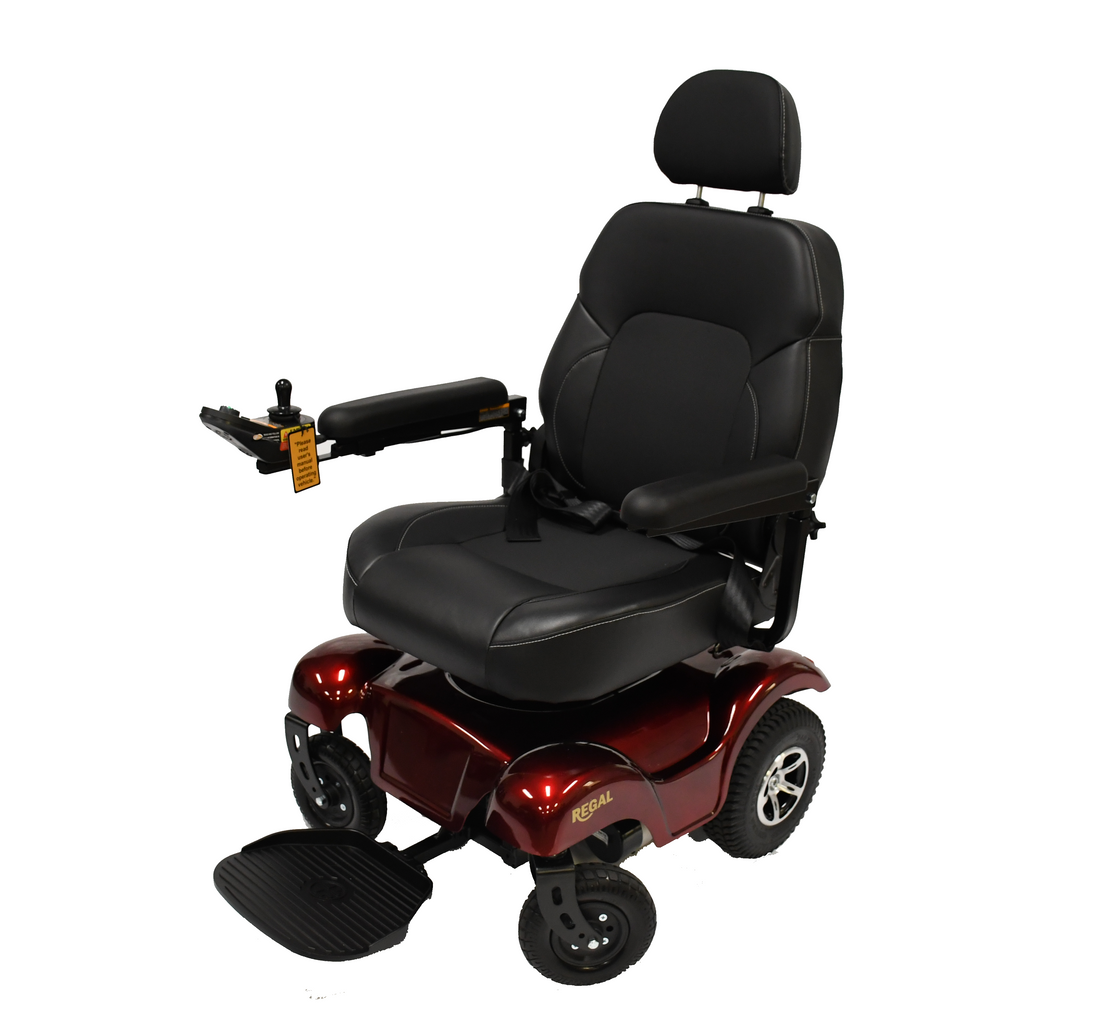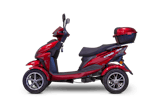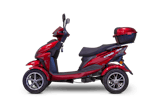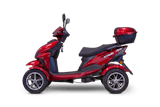Be it from old age or injury, difficulty with mobility can severely affect one’s ability to live independently. This is where mobility devices step in.
There is a wide range of mobility aids available today, including manual wheelchairs, power wheelchairs, and mobility scooters. And it can get confusing to make the right choice. Purchasing a mobility device is a long-term investment, and needs to be thought through carefully before arriving at a decision.
Here’s a comprehensive guide to help you choose the right mobility device for your needs.

Types of Mobility Products
There are many types of mobility devices available in the market such as canes, walkers, walker-cane hybrids, crutches, powered wheelchairs, mobility scooters, etc. to support people with mobility issues. However, in this article, we will primarily explore wheelchairs, both manual and power wheelchairs, and mobility scooters to help you narrow down your choices and choose the right mobility aid.
Mobility Scooters
Of late, mobility scooters have become a popular option among seniors with mobility problems.
Mobility scooters are typically battery-powered and have 3-5 wheels. They feature tillers, which are T-shaped steering columns, and handlebars with switches for maneuvering. They also have footplates on which the user can rest their feet. Users can mount the scooter by lifting the armrests to slide in or out.
All of these features make mobility scooters well-suited for those who lack upper body strength or suffer from posture issues or are unable to maneuver a wheelchair.
Mobility scooters are sturdy and durable and can be maneuvered over different kinds of terrain. They are best used outdoors and for long distances. They come in different sizes and designs, of which some are bulky and can’t be easily transported while others are compact enough for easy transportation. They can be faster than wheelchairs, but they may also be more expensive.
Wheelchairs
Wheelchairs are meant to be used by people who cannot walk or have been advised to not put any weight on their legs. Wheelchairs can be used over long distances and are suitable for those with severe disabilities.
There are different types of wheelchairs such as manual wheelchairs, electric or power or motorized wheelchairs, sports wheelchairs (used for sports), and standing wheelchairs (allow users to move around in a standing position). All of these are designed for specific purposes.
Let’s take an in-depth look at manual wheelchairs and power wheelchairs, which are two of the most commonly used mobility devices.
Manual Wheelchairs Vs Power Wheelchairs
Power and manual wheelchairs are the two most common types of wheelchairs used for personal mobility. Read on to learn the major differences between them so that you can zero in on the best type of wheelchair for your needs.
Manual Wheelchairs
Manual wheelchairs need to be controlled manually. They have 2 caster wheels at the front and 2 rear wheels. Manual wheelchairs also have different types such as foldable, non-foldable, self-propelled, and attendant-propelled.
Self-propelled manual wheelchairs have hand rims, small caster wheels at the front, and large rear wheels that help in easy maneuvering. They also have parking brakes fitted on the rear wheel tires. Attendant-propelled manual wheelchairs, also known as transport wheelchairs, have small wheels both at the front and rear along. The back of these wheelchairs also have handles that an attendant standing behind the wheelchair can use to maneuver it. These wheelchairs come with a hand-operated or foot-operated braking system.
Benefits:
- Simpler to use
- Compact enough to fit in tight spaces
- Lightweight and cost-effective
- Low maintenance costs compared to power wheelchairs
- Easier to transport
- Since they don’t run on batteries, there is no need for regular battery charging.
Drawbacks:
- Require greater strength and maneuvering skills from the user
- Can cause shoulder wear and tear when used over a longer period
- Unsuitable for use on uneven or rough terrains or over long distances
Power Wheelchairs
Electric or power wheelchairs run on electric power but feature a joystick that is operated manually for maneuvering. People who are unable to use their hands to maneuver a joystick may be provided with a power wheelchair that is equipped with head switches or chin-operated joysticks.
Power wheelchairs generally have 6 wheels — 2 drive wheels and 4 smaller caster wheels that provide greater stability and balance. If you require a long-term mobility device, a power wheelchair will be the most comfortable wheelchair for you.
Benefits:
- Useful to travel over longer distances
- Do not require much strength from the user
- Come with multiple drivetrains, making it easier to navigate over different terrains
- Do not cause shoulder wear and tear, making them more suitable for long-term use
Drawbacks:
- Electric wheelchairs are heavier and more expensive
- More difficult to transport than manual wheelchairs
- Higher maintenance costs
- Require some technical know-how as the programming controls are more complex
- Cannot be used without regular charging as they run on batteries
Power Wheelchairs Vs Mobility Scooters
Now, power wheelchairs and mobility scooters may seem similar as they are both non-manual devices. However, there are specific differences between the two that make them uniquely suited for different needs.
Here’s a comparison between the two to help you decide which mobility aid will suit your needs:
- Power wheelchairs are controlled with a joystick, whereas mobility scooters use T-shaped steering columns and handlebars with switches for navigation.
- Power wheelchairs have 6 wheels, while mobility scooters generally have 3-5 wheels.
- Power wheelchairs require lesser body strength from the user, making them better for those with serious mobility issues.
- Power wheelchairs are better than a mobility scooter for outdoor use.
- When it comes to rough terrains, mobility scooters are better than power wheelchairs due to their rugged and durable design.
- Power wheelchairs are available in a more compact size than mobility scooters. This makes power wheelchairs more easily transportable in a vehicle and also great for indoor use.

Factors to Consider While Choosing A Mobility Device
Different mobility devices have different uses, advantages, and disadvantages. When choosing a mobility device, there are certain important factors that you must consider:
#1. Level of Assistance Needed
Before buying a mobility device, you need to determine whether you can operate the device on your own or if you will need assistance. If you can operate it on your own, you can opt for a self-propelled manual or power wheelchair or a mobility scooter. However, if you require assistance, an attendant-propelled manual wheelchair might be more suitable.
#2. Range of Mobility
Your medical condition and range of mobility, i.e., which part of your body you can move, will also determine which mobility device is more appropriate for you. As previously stated, mobility scooters are more suitable for those who cannot move their upper body but are able to move their hands and possess good motor skills. For those who can move their upper body but are unable to move their legs, a wheelchair will work best.
#3. Duration of Mobility Assistance
You need to consider the duration for which you will need mobility aids. While power wheelchairs and mobility scooters are great for those who need to rely on mobility aids for longer periods, manual wheelchairs are better for those who require mobility assistance only temporarily, such as in case of emergencies, accidents, and short-term physical disorders or disabilities.
#4. Location
Will you be using the mobility aid indoors or outdoors? While all 3 mobility products can be used both indoors and outdoors, manual wheelchairs are easier to maneuver indoors, while power wheelchairs and mobility scooters generally work well outdoors. Among these two, mobility scooters also work better over rough and uneven terrains as they have a rugged and sturdy design that makes them more durable and versatile.
#5. Distance
Distance is another key aspect to take into consideration. Power wheelchairs and mobility scooters are great for both long and short distances. But it is not recommended to use manual wheelchairs over long distances. If the distance is a major factor for you, look for the best type of electric wheelchair to aid your mobility.
Choosing the Best Type of Mobility Device
When it comes to mobility devices, there is no one-size-fits-all approach. There are several aspects that must be considered — your medical condition, range of mobility, where you will use the mobility aid, how long you may need it, the distance you regularly travel, and even your budget.
We hope we have helped you in your search for the right mobility aid to live a better, more mobile life!
Here’s the list of
1- Manual Wheelchairs
2- Power Wheelchairs
3- Mobility scooter
Still not sure about what to choose, please Contact-Us and we will be happy to help..











































